Between ecology and technology
Adriano Amaral's hybrid world
Those who missed the first solo exhibition of work by Brazilian artist Adriano Amaral at Galerie Fons Welters at the end of last year are in luck: Prole is being revived at Art Rotterdam. In part, that is. The gallery will be showcasing some of Amaral's Prosthetic Paintings that were featured in Prole. For this series of paintings, Amaral used photographs taken with his smartphone as a starting point and then produced them in the same silicone as used for prosthetics.
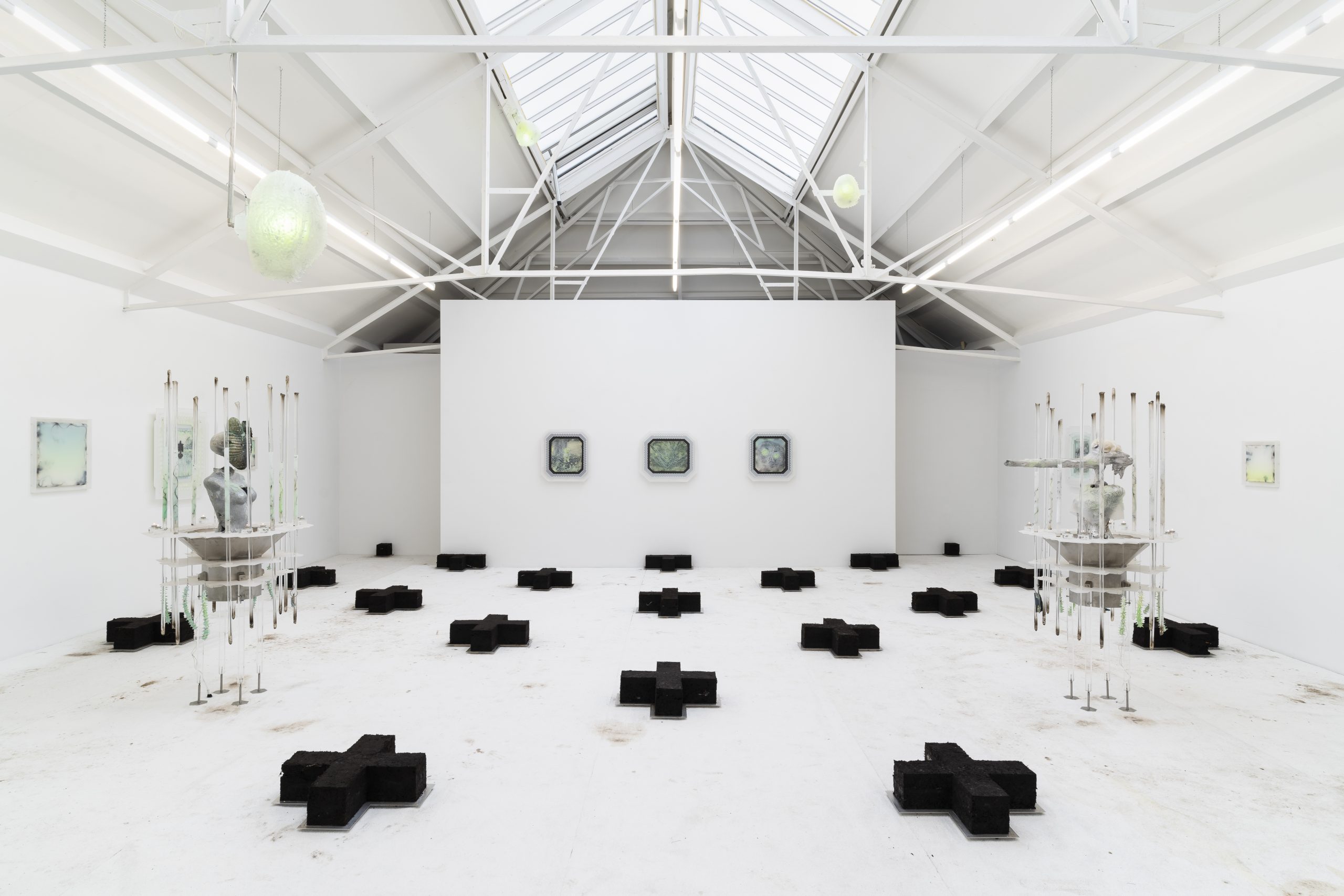
Describing the content of the work of this alumnus of De Ateliers is much more challenging than the type of silicone he uses. The press release for Prole, which means ‘offspring’ in Portuguese, describes Amaral's work as an exploration of the materiality and content of everything surrounding us and how things gradually change over time. If we take the title literally, it is about over-evolved offspring. Amaral (Brazil, 1982) experiments with contrasts both conceptually and in terms of materials – living-dead, organic-digital, ecological-technological, but also tangible-ephemeral – to arrive at hybrid forms of those contrasts, which can be so confusing that you are forced to rethink the concepts.
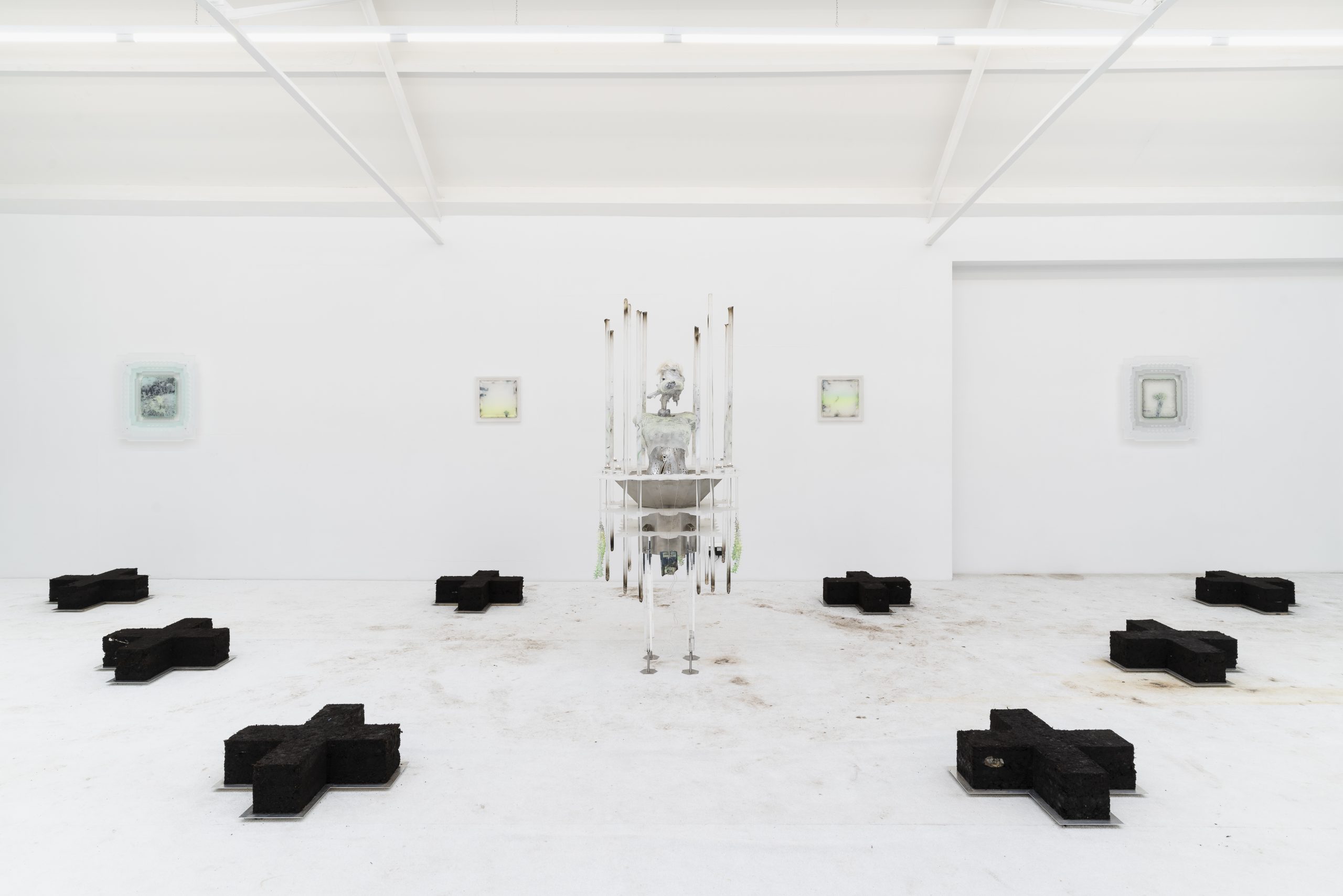
A space with its own logic
Those who came to see Prole had to step through a number of plastic flaps, as if entering a walk-in cooler, a symbolic gateway to a space with its own visual language and corresponding logic. On the floor of the entirely white gallery were 32 crosses made of dirt, each on its own aluminium platform. During the exhibition, the dirt continuously dried out, causing the crosses to become brittle and eventually fall apart.
The gradual transition from life to death is a fairly obvious contrast. The cross shape is a clearly religious symbol, combined with the slowly drying dirt, which may be interpreted as crumbling religious awareness, but Amaral takes it even further. The crosses extend all the way to the walls of the gallery, where half crosses are displayed. This creates the suggestion that the crosses continue endlessly outside the gallery, as if you've entered a kind of digital mesh where an organic and a digital world merge.
"My ultimate goal is a hybrid between something organic like dirt and the digital domain," says Amaral, who worked on the installation for over a year. "At the beginning of my career, I mainly created site-specific installations, but nowadays also more autonomous work, like the Pinturas Protéticas (Prosthetic Paintings). But I still want visitors to see something everywhere and connect with other objects in the space. I also want my work to be open to interpretation so that visitors can make their own connections."
Amaral describes his approach as intuitive. "Initially, I combined things I found, such as a branch with a cap from a PET bottle. Only after a few years did I realise that the things I combined carried a duality in them on many different levels. In a show like this, I start intuitively, but at a certain point, I know what I want to create and it becomes more conceptual."
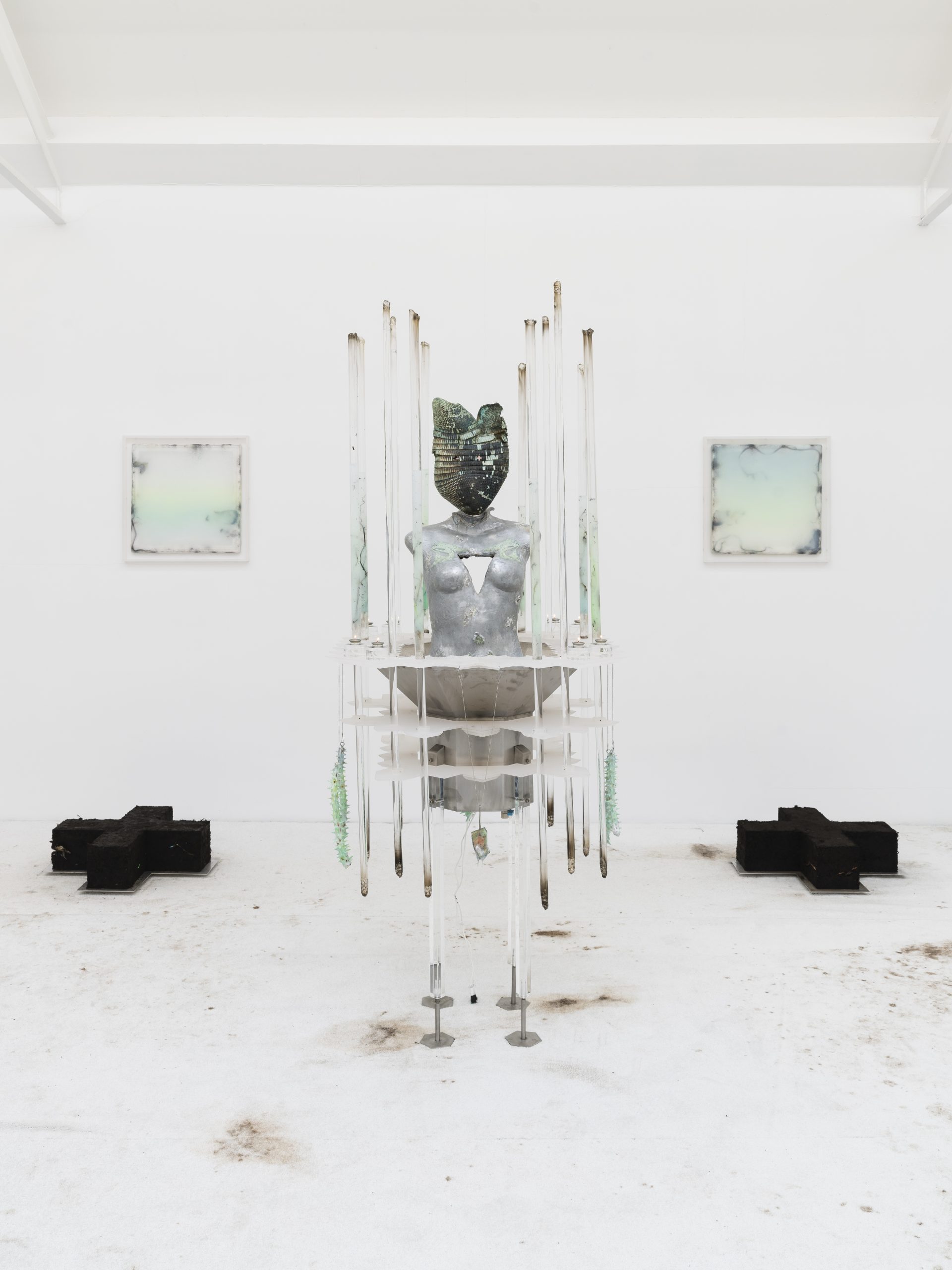
Pinturas Protéticas
On the walls hung the Pinturas Protéticas, made of silicone used in prosthetics for people who have lost a limb. Touching is rarely allowed in art, but with Amaral's works the skin-like structure makes it difficult to suppress that tendency. "It feels soft, like human skin," says Amaral. He has been working with silicone since 2015 but only developed this complex application last year.
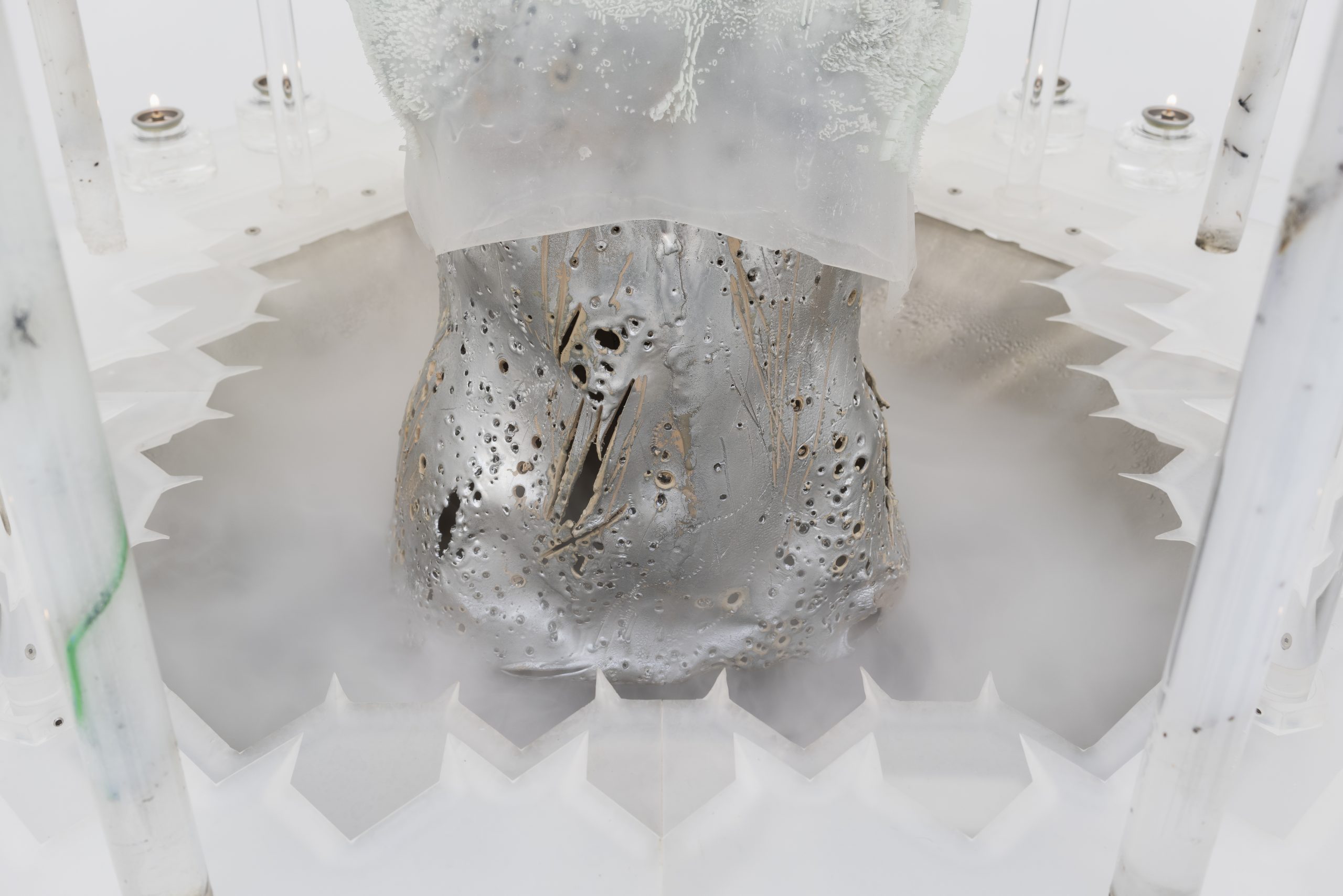
With the Pinturas, there is also a hybrid aspect. Although the works have an almost skin-like quality, they were 3D printed. Because the works are recessed in a kind of membrane-like frame, you view them from closer by. For Amaral, it's about the effect of experiencing something made with a printer as human and intimate. The depictions in turn have an artificial, futuristic citrus or lime green colour, making the animal scenes appear somewhat unnatural.
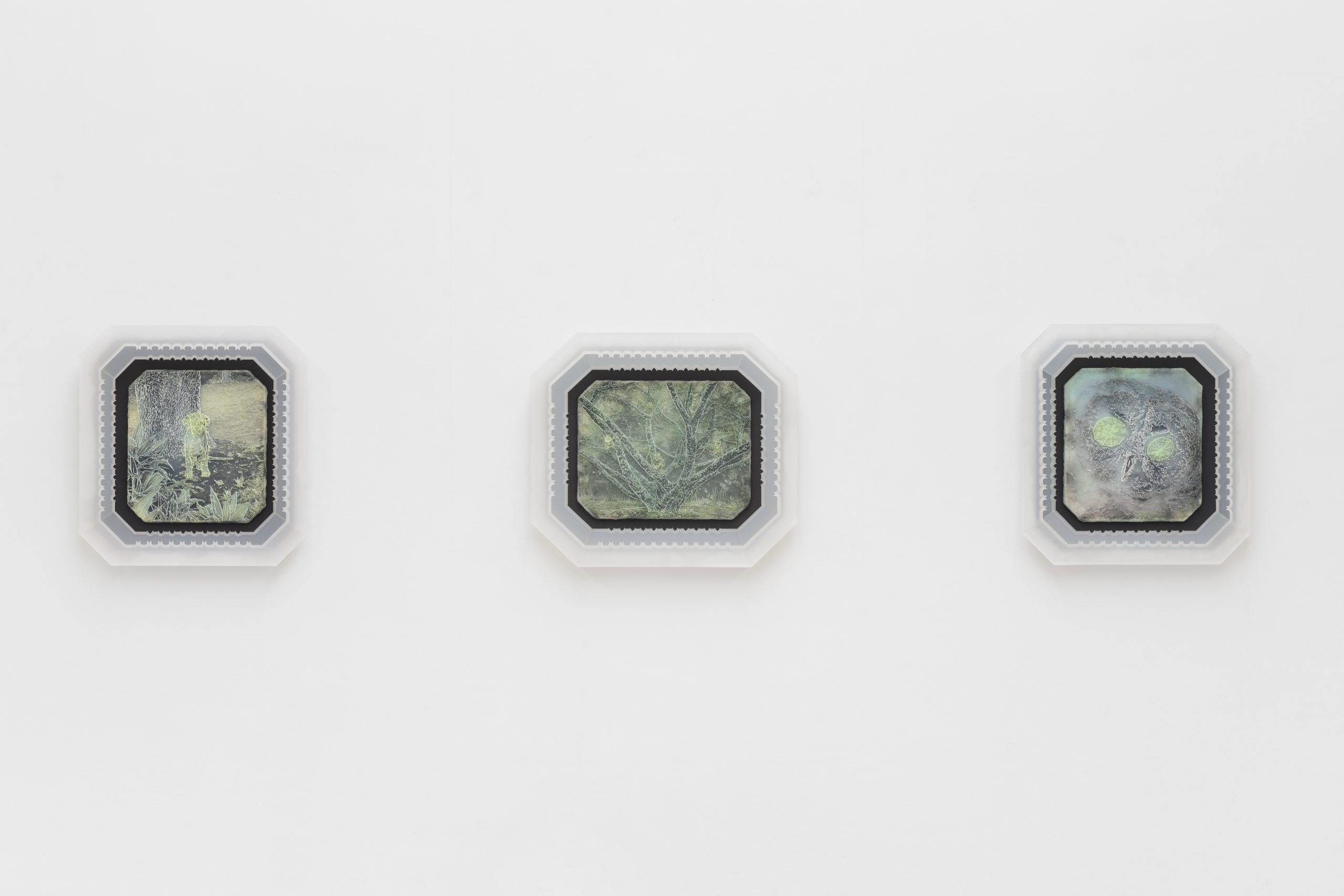
The photos that served as a starting point were taken by Amaral in his immediate surroundings with his mobile phone. "In past work, my environment was an integral part of the work in the form of the materials used," says Amaral, who now lives on his family's farm three hours from São Paulo. "This time, I also wanted to show images of my environment, so I’ve occasionally added something I like or found online, like the man in the frog suit."
Written by Wouter van den Eijkel


